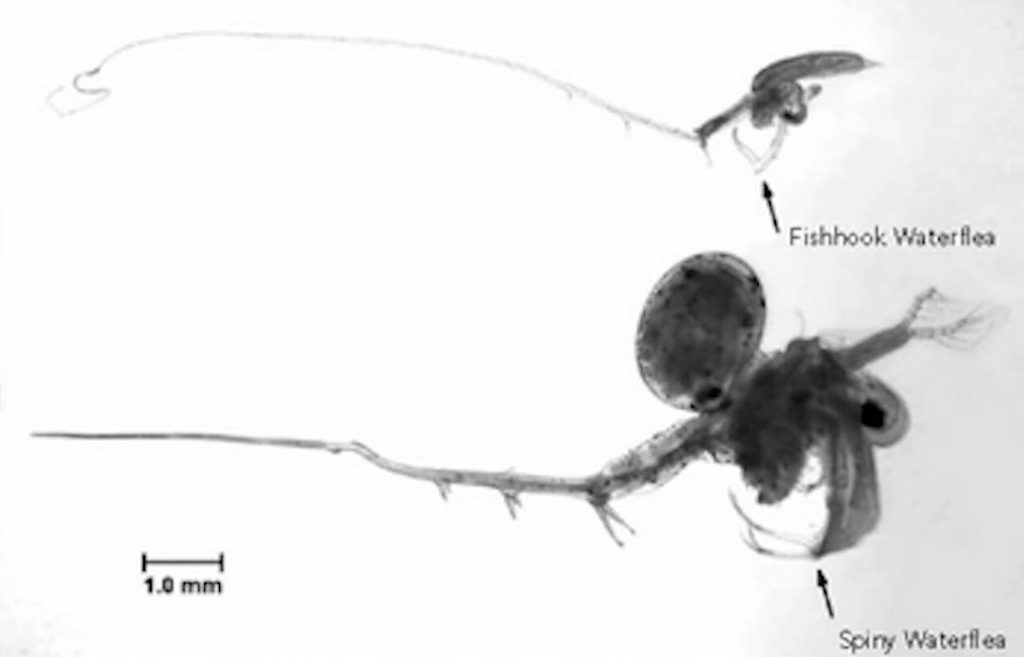Invasive ‘water fleas’ continue decades-long spread across Ontario lakes
Posted April 28, 2024 8:53 pm.
Last Updated April 28, 2024 8:54 pm.
As the province finds itself facing down several new invasive species, we’re being asked to watch out for an old one continuing to gain ground – or in this case water – across the province.
The nearly microscopic organisms, known commonly as the Spiny and Fishhook Waterfleas, were introduced to the Great Lakes back in the early 1980s and they’re still here. This invasive organism, historically from Eurasia, was introduced through the ballast water of travelling ships and since arriving has continued to spread. Now with spring underway, outdoor enthusiasts are being asked to watch out when it comes to their marine equipment.
“It’s so important to not let any standing water exist in your vessel between water bodies because that’s all it would take to introduce a new population,” explains Brook Schryer with the Ontario Federation of Anglers and Hunters, who estimates at least 100 inland lakes have now been impacted by this species.
“They are a hitch-hiker species so they are able to latch on to your boat or your trailer,” says Liana Hryniewicz with the Invasive Species Centre.
Spiny and Fishhook water fleas both have a single dark eye, four pairs of legs and branched antennae that are used for swimming. Clumps of water fleas look and feel like gelatin or cotton batting with tiny black spots. Both species are able to reproduce asexually, by cloning, and also sexually, and can multiply very quickly.

According to the Lake Simcoe Region Conservation Authority, this tiny aquatic pest has actually been on the decline in Lake Simcoe but on the rise a little further north in the Muskoka Lakes, impacting both recreational and commercial fisheries.
Waterbodies that have been infested will contain jelly-like globs of spiny water fleas that get caught on fishing lines and other fishing equipment, making it difficult to reel in lines, and clogging commercial nets and trawl lines.
“The main reason that they are such a threat is because of how they would affect the food chain. They eat zooplankton and since there could be so many in an area they would out-compete and basically remove this level of the food chain for other species,” says Hryniewicz.
Some areas have seen a decline of between 30 to 40 per cent in native populations of zooplankton following the introduction of the water flea.
The best way to help prevent the spread of this species is to inspect your boat, trailer and equipment after each use; remove all plants, animals and mud before moving to a new waterbody; and rinse all recreational equipment with high-pressure or hot water or let it dry in the sun for at least five days.
If you have bait left over after fishing, you should dump it 30 metres away from any shoreline.










